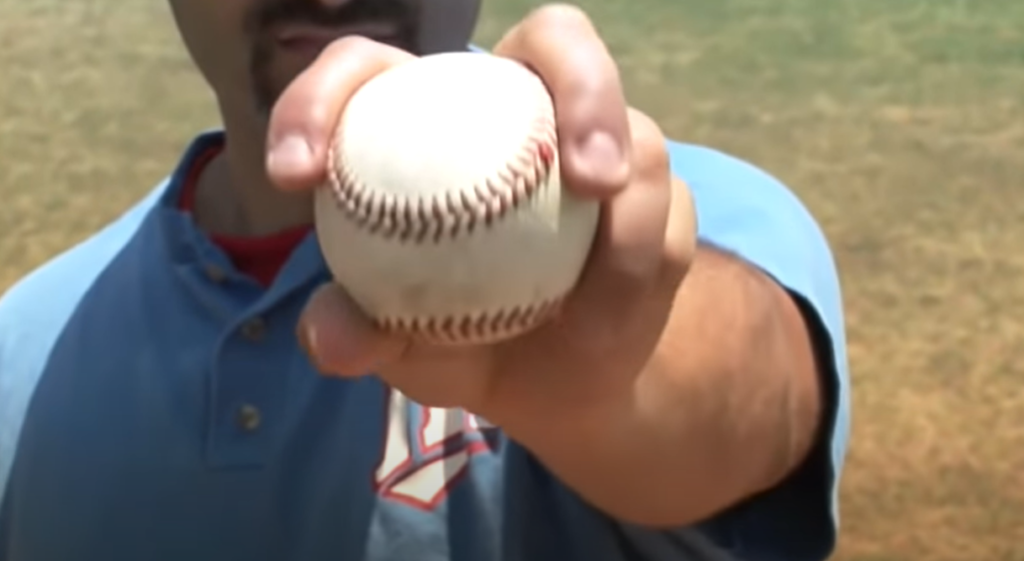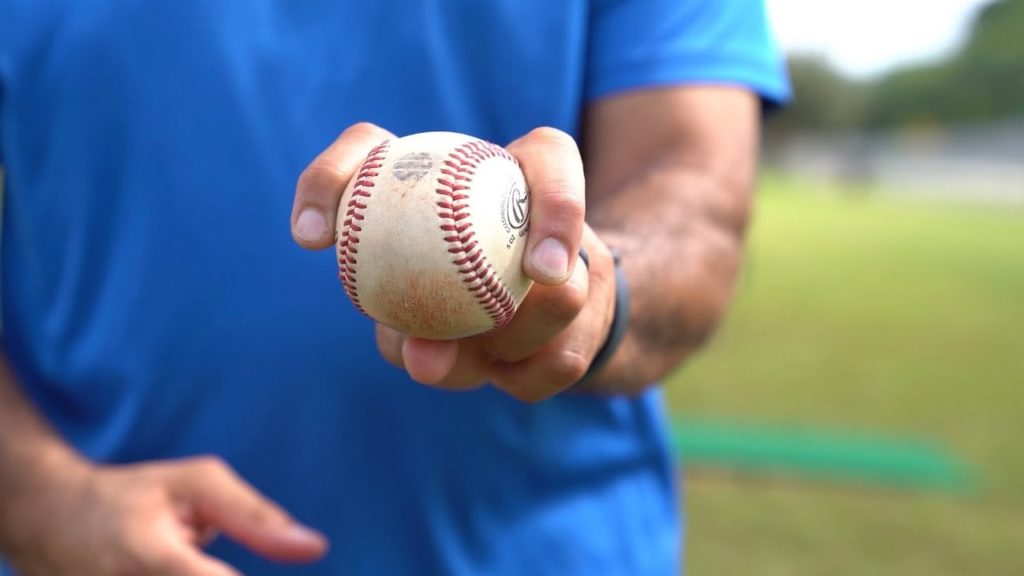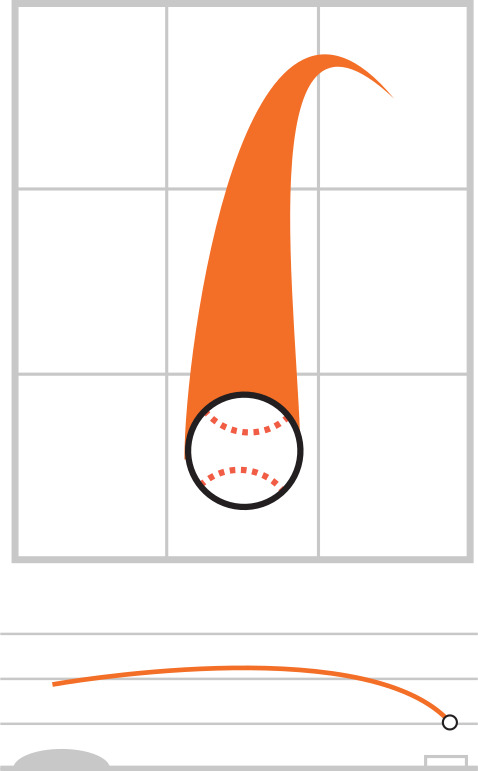The forkball and splitter are two solid MLB pitches that give the pitcher a potential fastball-style pitch with some extreme movement. When thrown effectively, a nasty forkball and/or filthy splitter can be nearly impossible to hit with any power. This article focuses on the forkball vs splitter, covering the differences that set the two pitches apart.
While the forkball and splitter have slowly disappeared from the game of baseball, both are solid pitches to add to any pitching arsenal. Read on!
What is a Forkball?
The forkball is often confused for a splitter with less velocity but still within the fastball family of pitches.
The forkball looks much like a fastball but with a gradual slow drop, making it difficult for opposing hitters to get the ball in the air and often creating weak ground balls. This pitch gets its name based on the finger position within the forkball grip resembling a fork.
What is a Splitter Pitch?
Splitters aren’t used as much as they should, based on their level of success. The splitter is a variation of a fastball, often called the split-finger fastball or the “splitter” for short.
Like any other fastball, the splitter approaches the plate with upper 80s and low 90s velocity before taking a sudden drop down towards home plate.
Forkball vs Splitter – What are the differences?
The debate over the forkball vs splitter can go on and on. Although the pitches are pretty similar, with the splitter created based on the forkball, the two pitches have some differences.
These differences between the forkball and splitter include the forkball grip vs splitter grip, the type of movement both pitches have, and the speed that each is thrown at.
Here are the key forkball vs splitter differences:
Forkball vs Splitter Grip
Splitter Grip
The splitter grip or split-finger fastball grip is very similar to that of the forkball, with the splitter being created based on the splitter. The middle finger and index finger will be spread out on the outside of the baseball seams that create the horseshoe shape. The only difference is the ball isn’t held as far back in the hand as the forkball grip.

As seen above, the baseball is positioned between the middle and index fingers but not nearly as deep as the forkball grip image above. The baseball is then thrown like a fastball while keeping the palm side of the wrist towards home plate with the wrist stiff, and the two fingers faced up towards the sky before releasing.
Forkball Grip
The forkball grip consists of the baseball being held between the middle finger and index finger, resembling a two-tine fork. The ball is wedged down deeper into the pitcher’s hand compared to the splitter.

With the index and middle fingers spread out as far as possible with the thumb positioned under the baseball, the ball is thrown by the pitcher like a fastball snapping the wrist in a downward motion before releasing the baseball.
Forkball vs Splitter Movement
The forkball movement will look like a two-seam fastball with a late hard or extreme downward break just before it arrives at home plate. A nasty forkball can make for a hard day for the catcher, with the hard downward movement being difficult for opposing hitters to pick up.
Like a forkball, the splitter movement will approach home plate like a fastball but drop downward to home plate, but with more spin than the forkball.
 Splitter (80-90 mph) A splitter pitch suddenly breaks down before reaching home plate. |  Forkball (75-85 mph) Moves like the splitter, but with gradual, less dramatic movement |
Forkball vs Splitter Speeds
Despite being thrown like a fastball, the forkball speeds are much slower, with most forkballs averaging around 80 Miles Per Hour (MPH) compared to an MLB fastball in the mid to upper 90s.
However, based on the pitcher throwing it, speed adjustments could be between 8-15 mph different based on the pressure applied by the middle and index fingers.
Splitter speeds are typically higher than forkball speeds but slower than a fastball. Average MLB splitters usually range between 85-87 mph, while some have reached as high as 96 mph.
At What Age Should You Throw?
Due to the tension created by the forkball grip and the requirement to hold the palm upwards, pitchers should wait till they are 15-17 years old to allow time for their arm ligaments and elbow to develop.
Much like a forkball, pitchers should wait to start throwing the splitter. While some doctors recommend waiting till 13 years of age, other doctors and sports trainers recommend waiting till between 15-18 years of age.
Famous MLB Pitchers to Throw
Forkball
Over the years, the forkball has slowly disappeared from MLB pitchers’ pitch repertoire, with very few pitchers using it. However, many starters have used the pitch over the years, including Hideo Nomo, Kevin Appier, Chien-Ming Wang, Dave Stewart, and Jack Morris.
Splitter
The splitter is slowly emerging as a favorite pitch of pitchers around baseball, including the resurgence of Kevin Gausman, who relied heavily on the splitter over the past few seasons. Other MLB pitchers to throw the splitter include Bruce Sutter, Masahiro Tanaka, and Shohei Ohtani.
Conclusion
Every play of the game starts with the pitcher’s pitch. The emphasis on learning how to throw different pitches and, more importantly, understanding how the various pitches work is key to the pitcher’s success. As you begin to develop a deeper pitch repertoire, take the time to study the forkball vs splitter grip, how each grip feels in your hand, and what type of movement comes with both pitches before adding the splitter or forkball to your pitching regime.
Lastly, when throwing, always remember to take the proper precautions to warm up and include an arm care program to ensure your arm stays healthy.